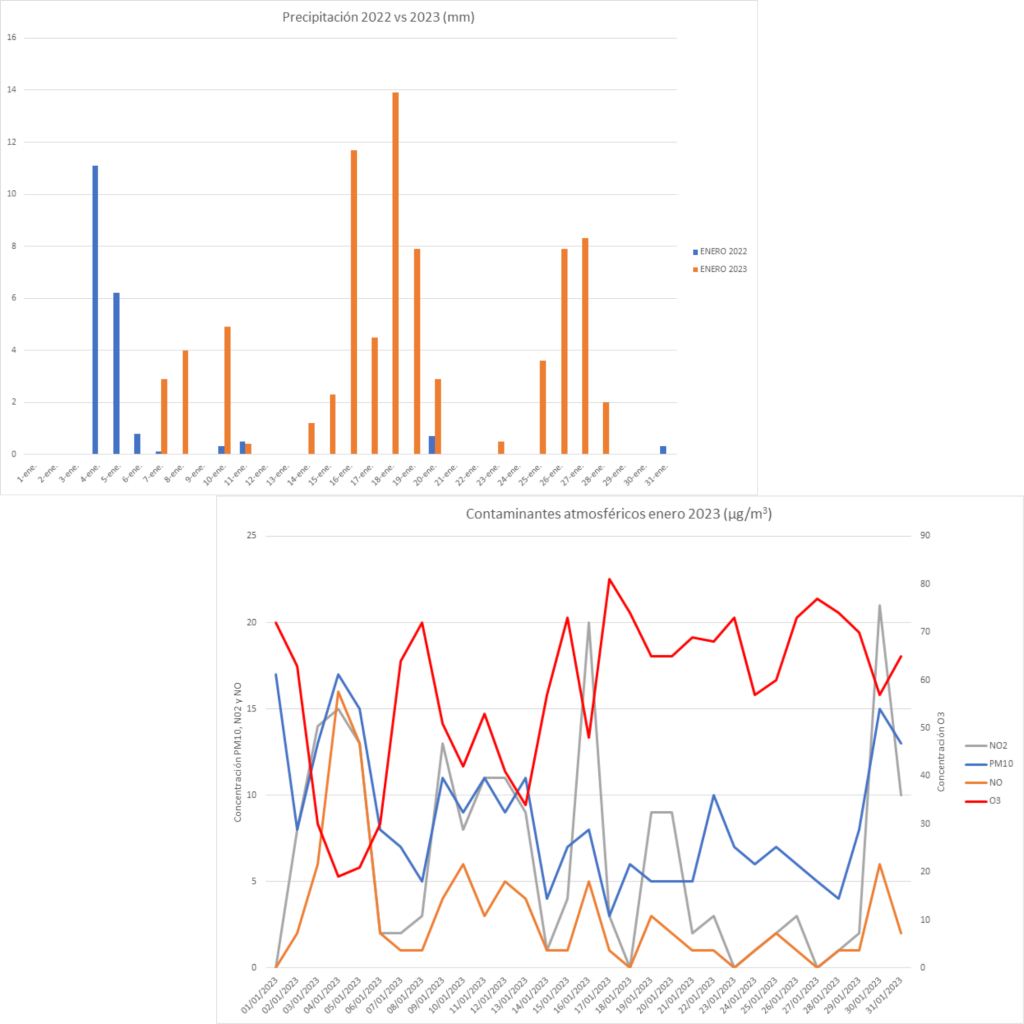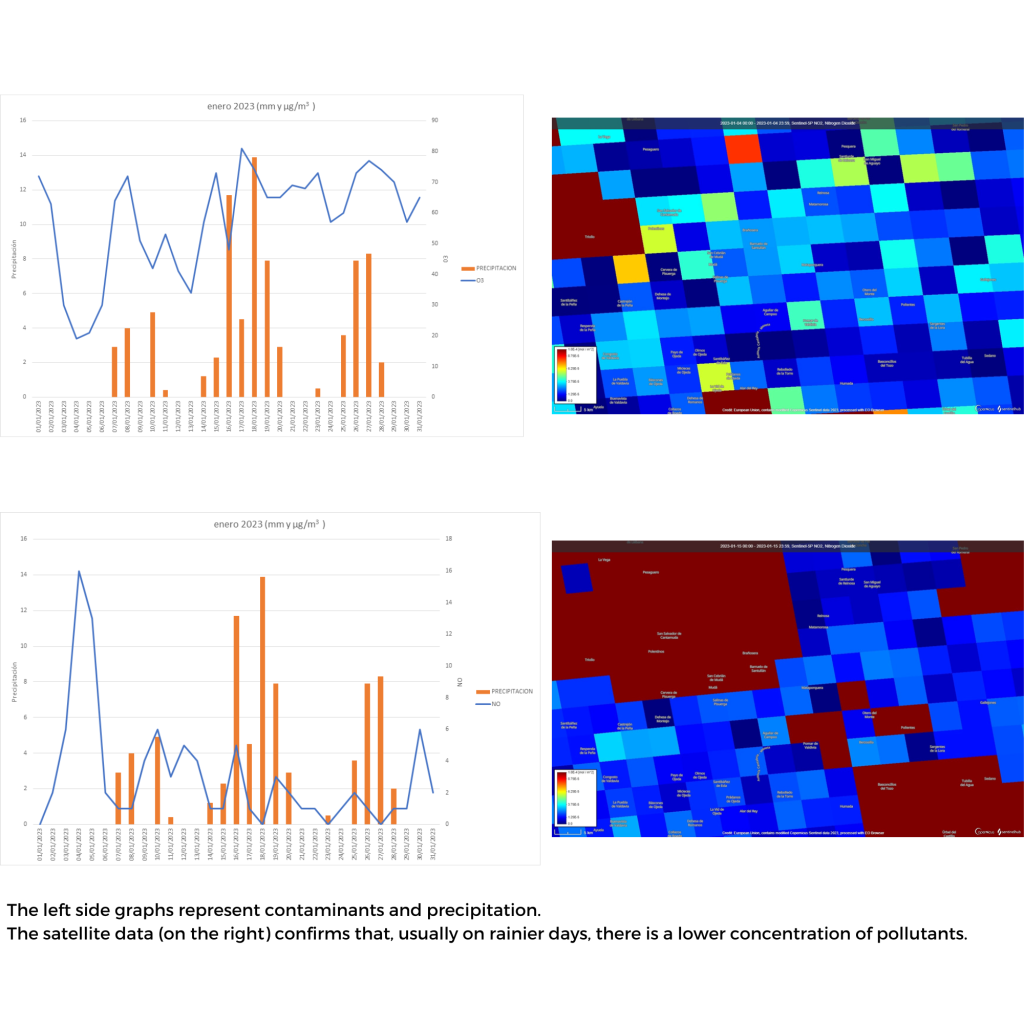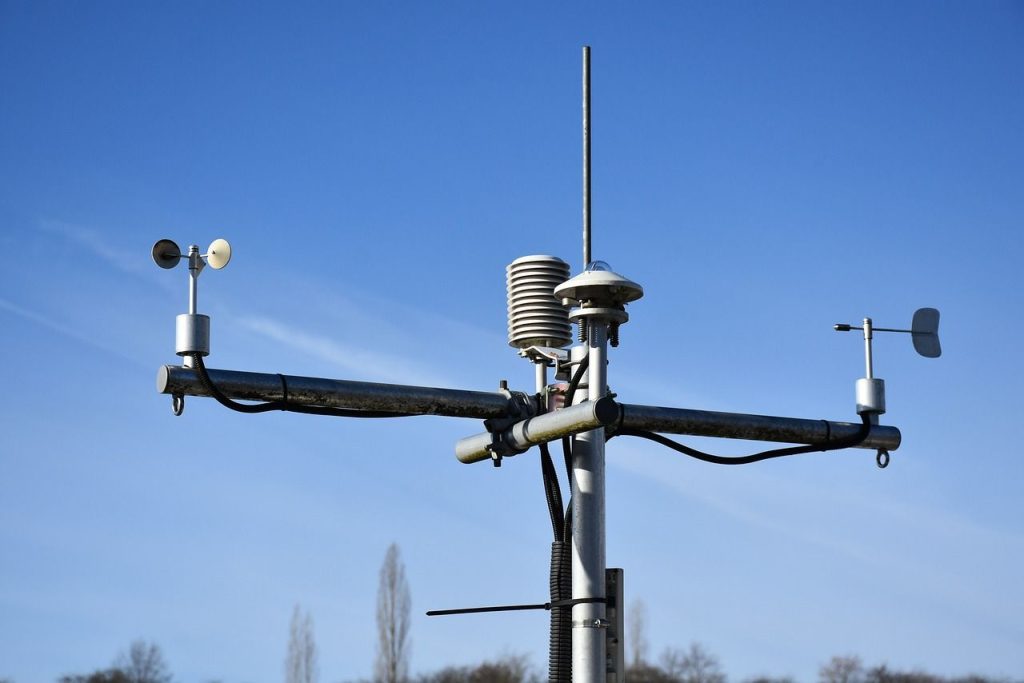Climate Detectives Projects 2022-2023
Project title: The Study and Analysis of Air Quality in an Abnormally Dry Period
Team: Colegio Antares Climate Detectives I
Colegio Antares Reinosa Spain 16 Student’s age: 14-15 years old
Does precipitation influence atmospheric pollutants in the area?
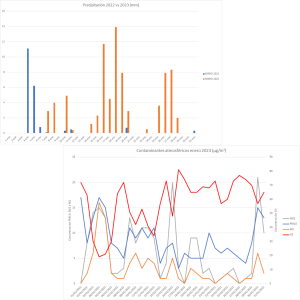
The region of Cantabria (North Spain) where the school is located, regularly experiences abundant rainfall. In the winter season, these precipitations frequently occur in the form of solid snow. Last year, our region suffered an abnormal situation during the fall and winter. In these months, there was a very small amount of precipitation compared to previous years. This problem raised the awareness of our team about the possible influence of precipitation on air quality and the worsening of the climate. The team was introduced to the scientific method, firstly with the formulation of hypotheses, then with the collection of data from various sources and its analysis.
In particular: We analyse the meteorology of the nearby environment using the temperature and precipitation data collected by the State Meteorological Agency (AEMET).
We analyse the air quality using the data provided by the Air Quality Control and Surveillance Network in Cantabria, in particular NO2, NO₂, PM10 and O₃We rely on the data provided by the Sentinel Hub EO Browser satellite tool regarding atmospheric pollutants and cloud concentration. Based on the data, its treatment and analysis, we will be able to establish if there is any degree of relationship and the possible influence on air quality in periods with hardly any rainfall. Due to time limitations, the study was restricted to only the months of January 2022 and 2023. As a consequence, no conclusions should be drawn, as a larger amount of data with a longer and more robust time scale is needed to be able to draw conclusions and relationships between variables. However, it can be a starting point for a longer-term project, which complements the collection of environmental and meteorological pollution field data in the courtyard of the centre itself. In this way, we can promote environmental awareness and scientific vocations throughout the school community.
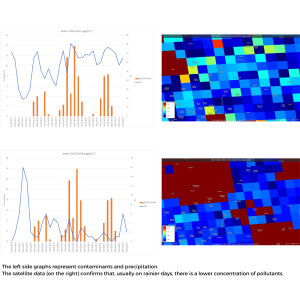
We found that the average maximum temperatures of the months analysed are higher than the average in the entire data collection. As well, the average minimum temperatures are lower. Likewise, the information collected shows exceptionally low rainfall and rainy days. Analysing the data, which shows more extreme temperatures than usual, as well as much lower rainfall, students hypothesised that both variables could be related. The period analysed would have a lower concentration of clouds and solar radiation, which would explain higher than average maximums (between 1 – 2ºC average). Similarly, it would explain the lower mean minimums, by the greater proportion of stable weather and no clouds which reduce the greenhouse effect at night. The analysis of air pollution data was somewhat more complex.
Finally, we observed that there was a certain correlation between some of the pollutants and rainy days. In particular, the level of pollutants such as NO2, NO₂, PM10 tends to increase on days without precipitation, while on days with precipitation they drop sharply, although with a certain delay in some cases. On the other hand, ozone O₃ presents less correlation with respect to other pollutants and with precipitation. This local data at the foot of the field is confirmed by the information obtained by ESA’s Sentinel satellites, which also collects information from a broader spectrum of the terrain. In this way, it is verified that the longest periods without precipitation show higher levels of atmospheric pollutants in all bordering areas. Meanwhile, in more humid periods, they are reduced.
In short, a correlation is established between various atmospheric pollutants and the absence of precipitation, as well as between the most extreme temperatures of the period and precipitation. The conclusions obtained must be endorsed by analysis with a longer time scale and taking into account new variables that may affect those studied in a more in-depth study.

Finally, once the project has been carried out, the participating students will communicate the results to the educational community in order to raise awareness about the problem. Truly, we all need to have as much information as possible.
For the students, participating in the project means fostering their communicative competence, creativity, cooperation and scientific spirit.
In any case, we intend to continue with the project so that it is more ambitious and has a greater amount of data that allows us to establish sustained conclusions.
We intend to build a meteorological and pollutant measurement station in our school to involve not only more students, but also to use it in various subjects (Geology, Physics, Geography, Biology, Technology). We will be able to collect meteorological data and also of some of the main pollutants. Thus, we will be able to compare them with the measurements of other stations and with the data provided by the satellites.
We will promote digital and technological competence by introducing sensors and automation for their collection.
Projects are created by the teams and they take the full responsibility of the shared data.
← All projects



